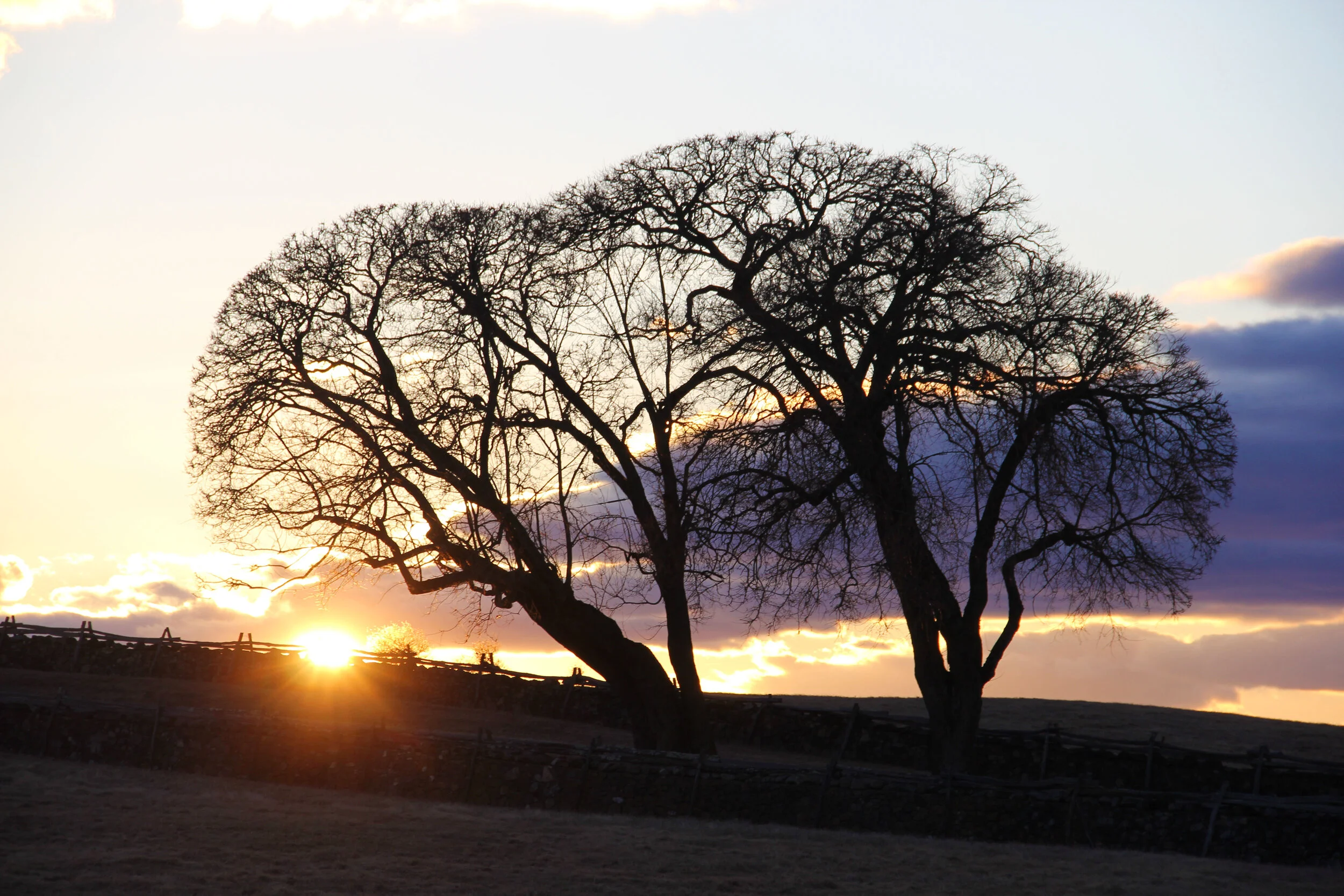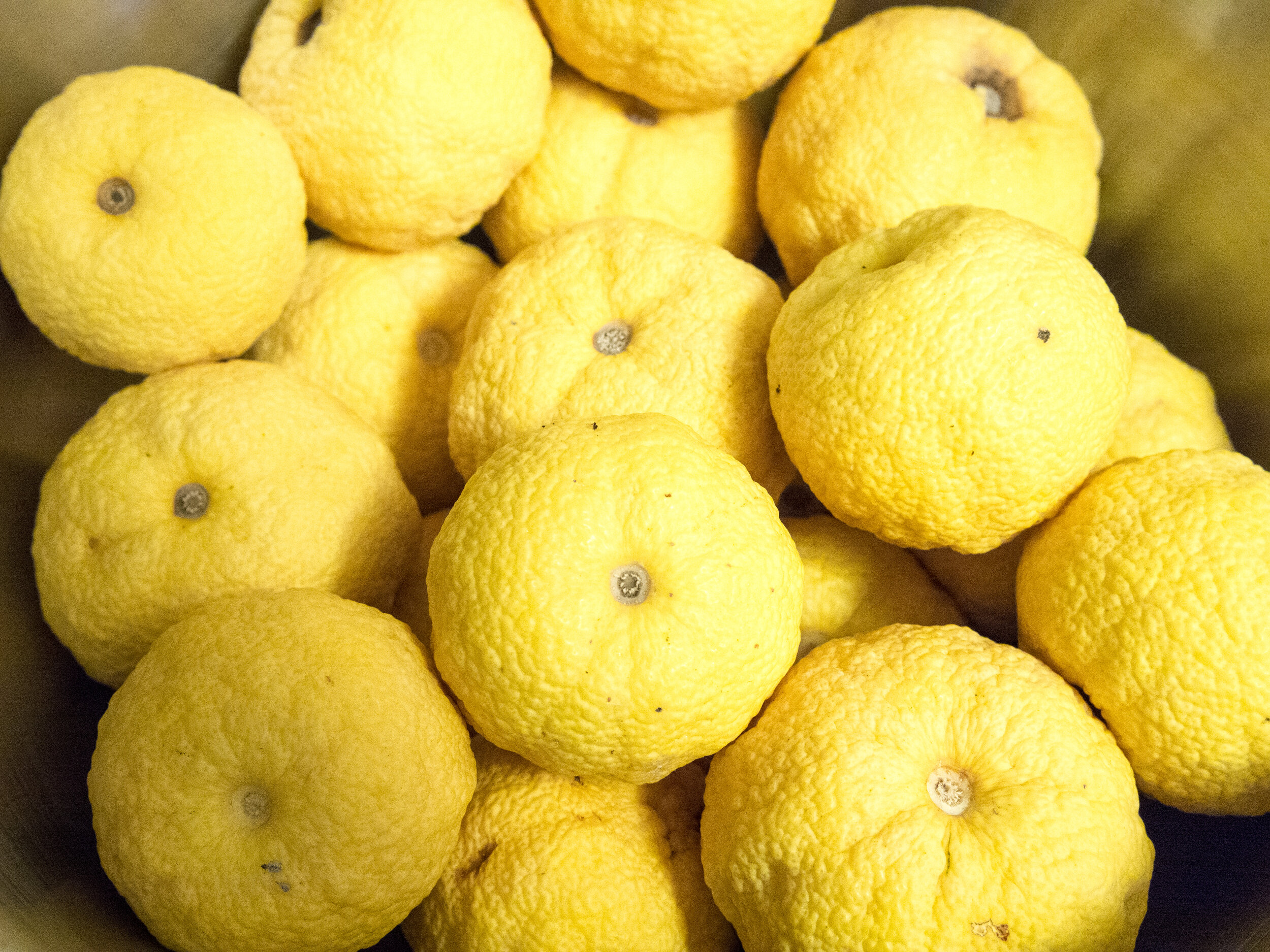Plants of the Winter Solstice
OSGF
As the world grows colder and darker, we turn to plants for a touch of color and life: dragging bushy evergreen trees into our homes, or pinning sprigs of bright-berried holly to our walls.
While most of us will pick up a poinsettia or wreath around this time of year without a second thought, such traditions have roots in an ancient, universal human drive to observe the Winter Solstice, the shortest day of the year in the Northern Hemisphere. Usually occurring in mid-December as the North Pole reaches its maximum tilt away from the sun, the solstice has inspired festivals and holidays around the globe for thousands of years, uniting families and communities to celebrate one of the earth’s most significant annual cycles. Regardless of the revelers’ culture or religion, plants play an important part in all these celebrations, their bright colors representing a promise of sunlight and spring.
In honor of the upcoming solstice on December 21st, we have compiled a list of ten plants used in mid-winter observances around the world - so pull up a chair near to your favorite holiday foliage, and find out about how these trees, shrubs, and vines help us to drive away the dark.
Evergreens
When we think of evergreens, conifers like pines, firs, and spruces typically come to mind. However, many of the plants on this list are classified as evergreens: non-deciduous trees and shrubs that, due to their ability to retain water throughout the cold months, hang on to their leaves.
This resiliency and ever-lasting color have fascinated people for thousands of years, and brought about evergreens’ associations with luck, protection, and goodwill: ancient Romans decorated their temples with evergreen boughs during December celebrations for Saturn, the God of agriculture, as well as weaving them into wreaths to crown important festival guests. Celtic druids adorned evergreen trees with food items in order to ensure a fruitful new year, a tradition that eventually morphed into decorating the Christmas trees we strap to the roofs of our cars today.
To learn a little about Oak Spring’s own evergreen traditions, check out this video of our gardening team’s recent winter wreath-making project.
Fly Agaric Mushroom
Fly Agaric, Fly Amanita by Anna Maria Hussey in Illustrations of British Mycology (1847). From the OSGF Google Arts and Culture page
While not technically a plant, this iconic red-and-white fungus has such an interesting connection to solstice celebrations that we thought it deserved a place on this list. Found throughout the Northern Hemisphere, these mushrooms are credited by some to have given birth to the legend of Santa Claus: in pre-Christian Siberia, Shamans would drop bags of the colorful dried mushrooms down the chimneys of locals’ tent-like homes as gifts, avoiding the door due to the snow piled high around it. The bright mushrooms also tended to grow around the base of conifers, which some researchers theorize inspired people to bring trees into their homes and place gifts underneath in imitation of nature.
It’s also worth noting, for anyone looking to perk up their holiday festivities, that Fly Agarics are poisonous - although many ancient peoples ingested them for their hallucinogenic effects, eating them is more likely than not to make you extremely ill.
Mistletoe
Photo credit: Schnobby, via Wikimedia Commons
Ever smooched someone under a cluster of mistletoe? The pretty plant, native to Europe and Northern Africa, is actually a poisonous, parasitic evergreen that sucks water and nutrients from other trees, so keep your children away from those shiny white berries. While not something you want to find in your backyard, mistletoe’s lush appearance and purported cure-all medicinal properties (it has been used to treat, with varying degrees of success, everything from skin ulcers to epilepsy) has given it a significant role in European myths and folklore. Many ancient peoples, from Romans to Celtic druids, hung up the leaves in their homes to encourage good fortune and peace around the time of the solstice. Because it was so vibrant even in the dead of winter, mistletoe was also associated with fertility, which eventually gave way to the present-day kissing tradition.
Today, mistletoe continues to find uses aside from making people uncomfortable at holiday parties: in some European countries, drugs made from mistletoe extracts are widely prescribed for cancer patients.
Yule Log
The word “Yule,” now synonymous with Christmas, derives from the Old Norse world jól, which refers to a winter solstice festival honoring the Norse God Jolnir (also known as Odin, for you Marvel comic fans.) The Yule Log has had a similarly dynamic evolution over the centuries. Originally a tradition in Western Europe, a yule log was a carefully-selected tree trunk or heavy branch, sometimes decorated in ivy and holly, that burned throughout the longest night of the year. Oaks were the wood of choice in many countries, due to their association with strength and endurance. Some people believed that how the yule log was lit and burned would determine their good luck - or lack thereof - in the new year.
Yule Log celebrations have endured into modern times, although without the actual log: chocolate log-shaped cakes can be found in many grocery stores around the holidays, and TVs are transformed into crackling hearths thanks to the rise in popularity of “yule log” videos.
Poinsettia
Before they began appearing in every drug, grocery, and hardware store in the U.S. around the holidays, poinsettias, which grow in mid-winter, were known as La Cuetlaxochitl in Nahuatl ( meaning “the flower that withers.”) The plant has a history in pre-hispanic Mexico and Central America that long predates its use in Christmas decor, having been used by the Aztecs for rituals, dyeing, and medicinal purposes. It became associated with Christian traditions in Mexico in the 16th century after the Spanish conquest: legend tells of a girl named Pepita, who, unable to give Jesus a gift for a Christmas celebration, picked a bouquet of weeds that transformed into a poinsettia when she placed it on a church altar. Around that time, the plant was named “Flor de Nochebuena,” or flower of the holy night, in Spanish.
Joel Roberts Poinsett, the controversial first U.S. Minister to Mexico, can be credited with bringing these brightly colored shrubs (the “flower petals” are actually leaves) to the U.S. in 1822, where they were widely cultivated and commercialized. So next time you pick up a poinsettia from your local CVS, remember that you’re handling a plant with a complex commercial, political, and cultural history.
Pomegranates (and watermelon)
Punica granatum by Dorothea Eliza Smith, c. 1850 (from the OSGF Library Collection)
In Iran, people celebrate Yalda on the longest night of the year, an observance that dates back to ancient celebrations of the birth of Mithra, the goddess of light in Irananian mythology. On Yalda, families gather to read traditional poetry and eat foods associated with warmer months throughout the long night. Pomegranates and watermelon, whose luscious red hues represents the glow of the dawn and the color associated with Mithra, are particularly significant - as well as sweet and tasty.
Holly
One of Oak Spring’s English holly trees.
Like mistletoe, holly has been a major player in mid-winter celebrations for thousands of years. Romans used it in their celebrations for the God Saturn, and ancient Celts would hang up holly branches in their homes to summon the good will of fairies, who they believed sheltered themselves under the waxy leaves. The use of holly for winter decor continued with the rise of Christianity, which associated the bright red berries and jagged leaves with Christ’s shed blood and crown of thorns.
While beautiful, English holly has caused problems in some North American forests due to how easily birds scatter its seeds among native trees. If you decked your halls with holly this year, you can help mitigate the spread of this invasive species by carefully disposing of the decorations either in the garbage or the compost after the holidays.
Yuzu fruits
Photo credit: Yuzu Edsel, via Wikimedia Commons
Want to really warm yourself up this winter? Draw a hot bath and drop in some yuzu, a yellow, winter citrus fruit with origins in Central China. Bathing with the bright, fragrant yuzu on Toji, Japan’s winter solstice tradition, is believed to bring foster good health and luck, cleansing away the remnants of the old year. The oils in yuzu can also help heal skin that is chapped and dry from the cold - a perfect way to reinvigorate yourself on the longest night.
Lingonberries
Photo credit: Arlo J, via Wikimedia Commons
Many of us have seen pictures of the lovely Swedish celebrations for the Italian martyr Santa Lucia, which feature young girls dressed in white gowns and crowned with evergreens and candles. Santa Lucia, whose feast day is observed on December 13th, is celebrated as a bringer of light during the darkest time of year, as legend tells of her bringing food to persecuted Christians with a crown of candles to light her way. Traditional Santa Lucia dress typically includes a crown of lingonberry branches - a type of fruit-bearing evergreen found throughout Scandinavia that, unlike other berries on this list, is quite edible. The bright red lingonberries represent light and life - and have numerous nutritional benefits, if you’re inclined to add them to your own winter feasts.
Oak Trees
An Oak Spring oak.
Unlike other plants on this list, solstice celebrations using oak trees haven’t quite lasted into the modern era. However, OSGF’s namesake tree was quite important to ancient European peoples: due to their size and hardiness, oaks represented the sun, strength, and wisdom, and appeared alongside kings and Gods in many myths. The name “Druid” - a term used to refer to ancient Celtic priests - derives from the celtic word for ‘duir’, or oak.
While they lack the colorful wintertime foliage of evergreens, oaks still found their way into winter solstice celebrations in Europe: aside from harboring parasitic mistletoe, another important solstice plant, they were also traditionally used in fires on the long night (as yule logs, or otherwise,) due to their hardy, long-burning wood. Some people would scatter their crops with oak ashes after the solstice, which symbolized spreading the power of the sun - a very practical tradition, as as hard wood ash can be a nutritious, potassium-rich garden fertilizer.
Want to learn more about the plants we use to celebrate? Check out this blogpost from 2017, which discusses Bunny Mellon’s Christmas traditions and a few other plants we associate with the holidays.









